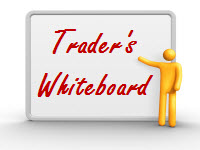 As traders we tend to think the most important part of trading is making money. This is what we all want, but sometimes we don’t pay enough attention to what is really important and that is protecting our money.
As traders we tend to think the most important part of trading is making money. This is what we all want, but sometimes we don’t pay enough attention to what is really important and that is protecting our money.
You’ve heard the terms “stop-loss” and “money management” over and over. Most of us are familiar with the basics of a stop, but did you know that there are three different types that you can employ to protect your capital?
Today Adam is going to explain the three types of stops and their respective pros and cons. We invite you to click here and watch today to find out which will work for you and your trading style.
Enjoy!
The MarketClub Team

I used to be a corporate commodities trader. It's pretty common knowledge that the floor traders and market makers try to push the market to trigger the stops. ...to pick up your shares/position at a bargain price.
Oddly enough, THEY can also read charts and figure out the levels where stops are likely placed. Personally, I would never enter my stops with the market makers. That's the equivalent of telling them where the gold is buried. They're GONNA go looking for it.
Good post SM.
I like to use a hard stop. I check the market during the last two hours of the day.
If I was stopped out, I look at the SPY chart to see if the market may be headed for a correction or
just ''market noise'' made by the current news and/or day traders doing their thing.
Then I look at the chart for my stock or ETF to determine if I want to re-enter or just stand aside and wait.
I like to use the Daily Triangle and the PSAR to help me set the stop loss and re-entry points.
You may be right John but we are not talking of exceptions here and my mental stop is actually the max loss I am prepared to bear. Also, see from this point of view that if I place a physical stop and flash crash happens I get stopped. This happens more often than if I am in some accident etc. and cannot close the trade.
Moreover, I am also a proponent of small lot sizes to minimize losses (not be greedy too). I also do not go into penny or under $5 stocks and ones which do not have over a million turnover, which can be manipulated easily.
Hope this helps.
Interesting comment by SM. In not setting a physical stop you are in effect increasing your risk. The situation could arise where you are unable to monitor the market due to unexpected circumstances (like accident etc) and you could lose big time. Would it not be wiser to set the stop at the maximum risk level you are actually prepared to accept?
I trade weekly charts and use % stops but this is only a book stop i.e. it is not a hard stop placed which can then be manipulated. So to avoid manipulation, I have stops in my book and only trigger market order to exit when the weekly candle closes below my stop level. Pls note only when it closes and not when it crosses. So many times I have experienced that hard stops get triggered and mkt moves higher. So I decided to place book stops in my head and only actually trigger it when candle closes below it. Yes my total loss could be a little higher than planned but more often I get saved from being stopped out and then mkt moving higher. This has been my experience so far.
A word of caution here. Mental stops require lot of courage to exit a trade when it goes against you and as humans we hope it will come back and do not exit. If you are that type than better to have hard stops then mental like me.
Good Video.
You did not mention "Trailing Stops" which automatically rise with your investment. Very useful in a rising market, but not so much in a volatile market.
Also, it is important to note that when a stop trips, it triggers a market order which could be filled lower or higher than your stop value. In a rapidly falling market, your actual exit point may be quite a bit lower than the actual stop value...i.e. "flash Crash".